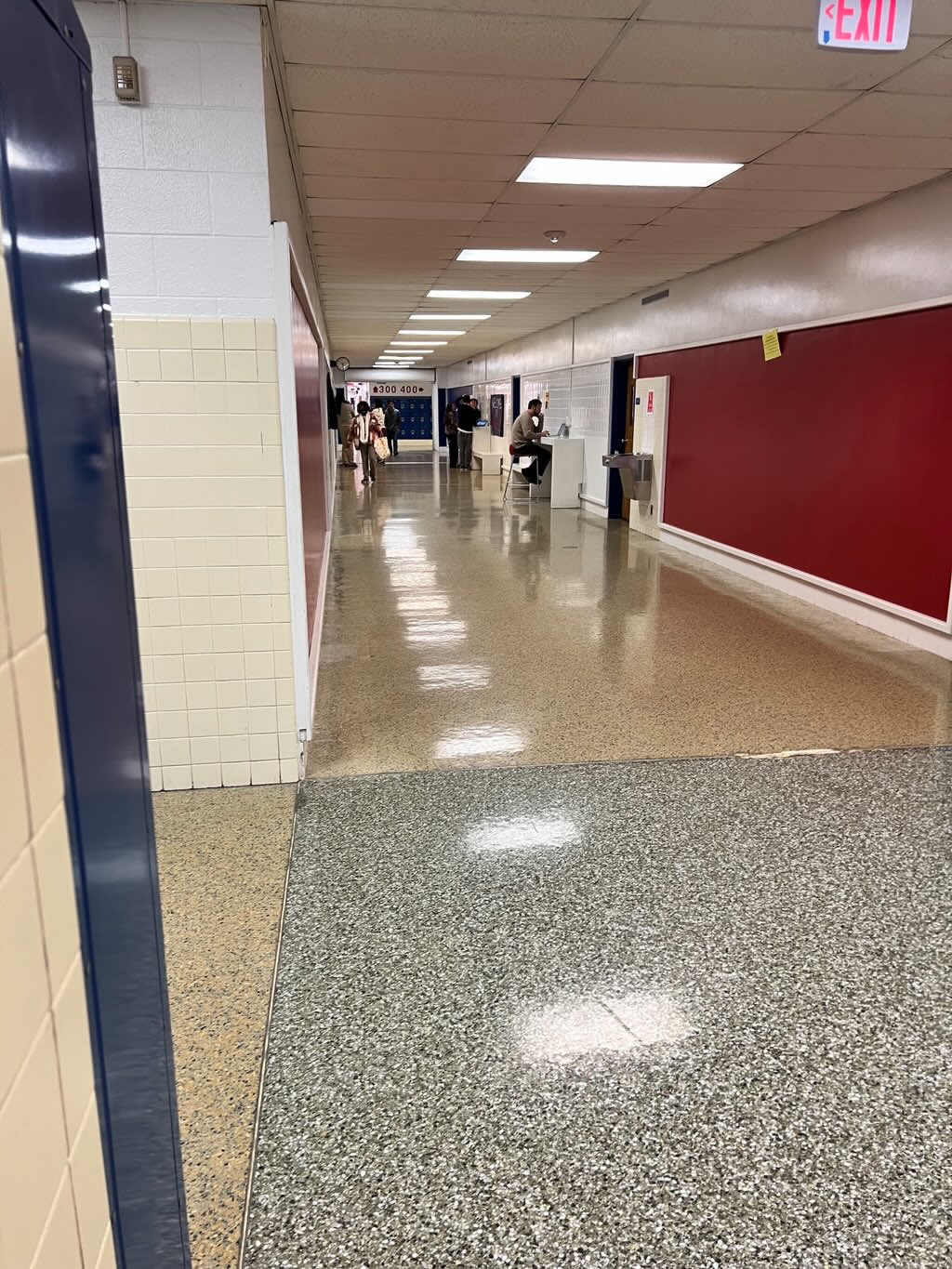Balancing Act Begins to Tumble
January 28, 2015
Going from class to class leads to inevitable changes for students at Kempsville: faces, location, teaching styles, and often the amount of students in the class. Commonly the variance between class sizes is small; likely a change of five or fewer. In some cases however, the change can be drastic.
One such extreme case is the school’s AP Government class in which this year’s seniors could either be placed in full class or one of only thirteen
“My class is big enough to fill all but one of the seats,” senior Reid Hasher said. “It’s possibly a little too big,” and this is the case for many classes at Kempsville.
Dealing with classes being overly full has becoming commonplace for many teachers. What is unique about this particular case is the drop in population on B-days. Oliver Burke, a senior also in Dr. Grahams AP Government class, described his bell as “only filling three rows.” This sudden shift is very puzzling to some, but it comes from the counselors attempt to balance all of the students’ schedules.
Crafting these schedules far from a one step process and it actually begins well before the final copies are stamped, sealed, and mailed. “First we ask teachers’ recommendations for each student,” guidance counselor Mr. Balboa said, “We then take into consideration the student’s request.” After they have laid out the class order based on these factors, the counselors seek parental approval for the final draft.
Having such varying classes requires teacher to adapt their teaching styles from one class to another in order to account for a lack of diversity in some classes which is not present in others. Burke saw good and bad in his case, saying he was happy with his class size because it allowed for “excellent focus and student-teacher interaction,” while also maintaining that “one or two more students wouldn’t hurt.” Burke’s thinking behind that latter statement was that having less students would ultimately lead to less input from his fellow students; in this way he saw having a smaller class as hampering his learning.
Burke’s experience is not advocating larger classes though. In Hasher’s experience, the overpopulated class can be just as hindering to the ever-important learning experience which high school centers around. Hasher feels that he would get “a more direct learning experience” if he had a smaller class because “people get off topic,” which takes away from the teacher’s lesson. While large classes open the floor to diverse class discussion, an effective form of teaching, they also allow a greater potential for tangents in class, defeating the purpose of the discussion.
When classes get beyond a certain size they can become disruptive, but if they stay too small there may not be enough different ideas to fuel them. The secret here is to maintain balanced size somewhere in the low to mid-twenties.
The variance in some class sizes can be attributed to several different elements. Most higher level classes have prerequisites, which means some students are restricted from taking them. Of the students able to take more difficult classes, only a portion chooses the harder path. Students must have the ability, as well as a willingness to take advanced courses offered at Kempsville. For these reasons, the higher level classes are often less populated than the more basic ones.
The above mentioned factors restrict some students at Kempsville from taking certain classes. “However,” Mr. Balboa said, “the main reason for such a difference in scheduling this year is the low number of students in the school zone.” The school has been witness to a shrinking population for some time now, but only presently has this change really begun to affect it.
“The decrease of students created a low teacher allocation for our school resulting in more students per core class,” Mr. Balboa said. Essentially what this means is more students are being put into fewer classes. Given the circumstances, the best way to be placed in a more reasonably sized class is to take ones that are more advanced—simply put, to push oneself.
Extreme class sizes can also pose a burden on the teachers, as they have to adapt their lessons in order to convey the same information to all of their classes. Burke believes that classes with too many students “may fall behind,” compared to classes with fewer. This pacing is not entirely the fault of distractions, as it can also be attributed to the immense task in simply teaching all of the information to all of the students. However, smaller classes may not get all of the information simply because a question was not asked in their class due to having fewer people. In this way smaller classes will not “fall behind” but they may not score as well on certain test questions. The class sizes should become more standardized and have a lower maximum occupancy in order to insure the best learning environment for the students of Kempsville High School.







